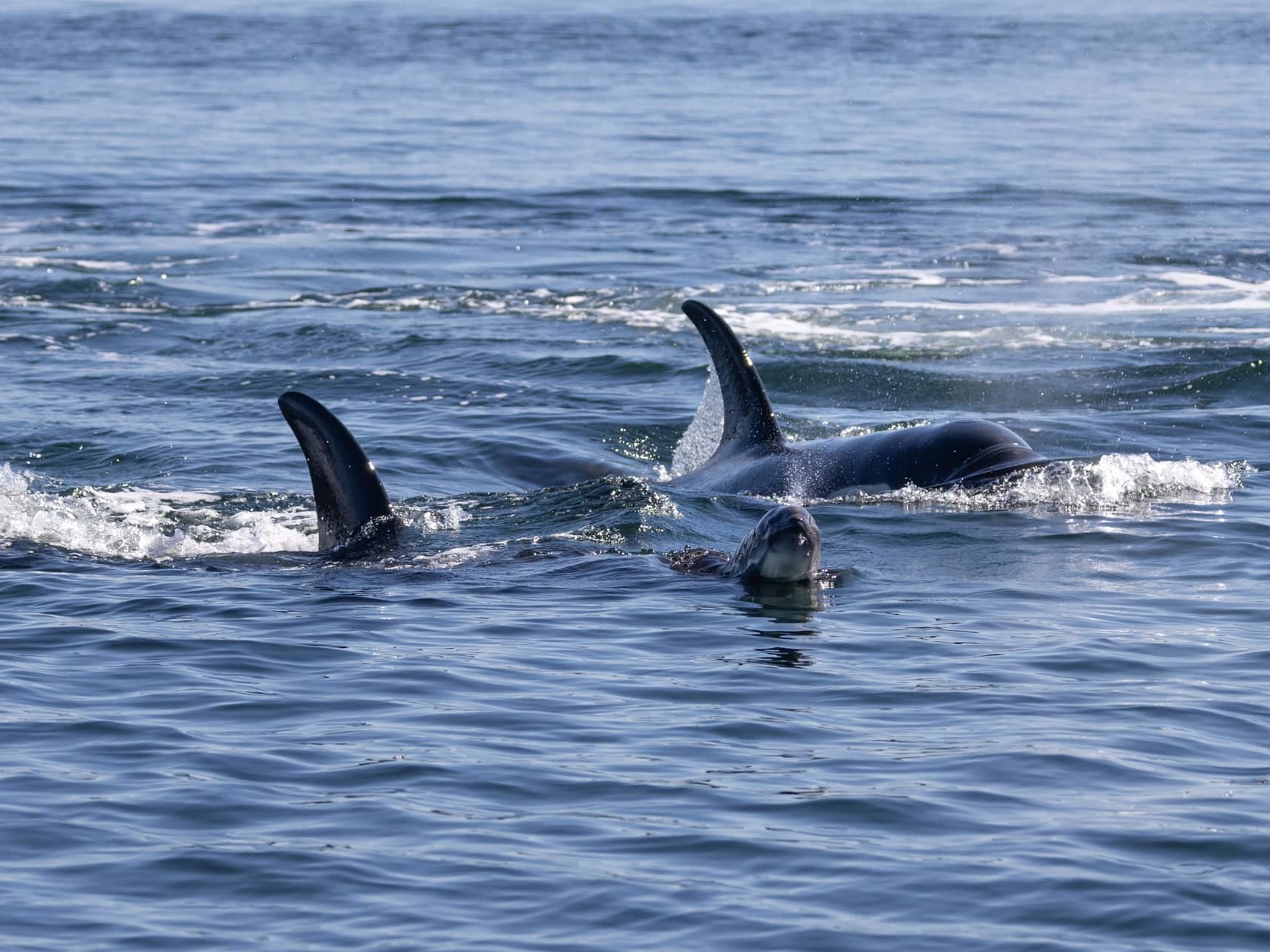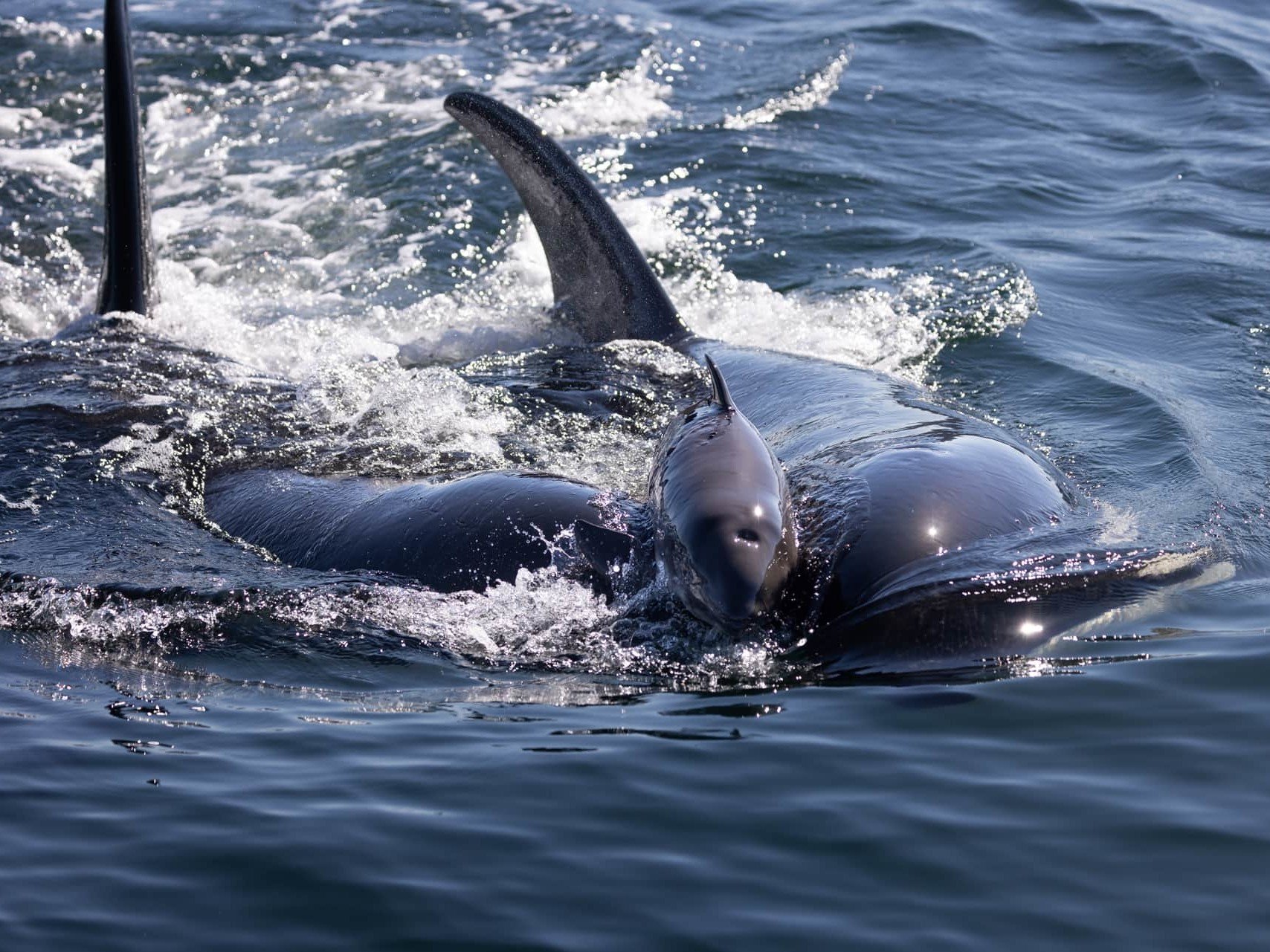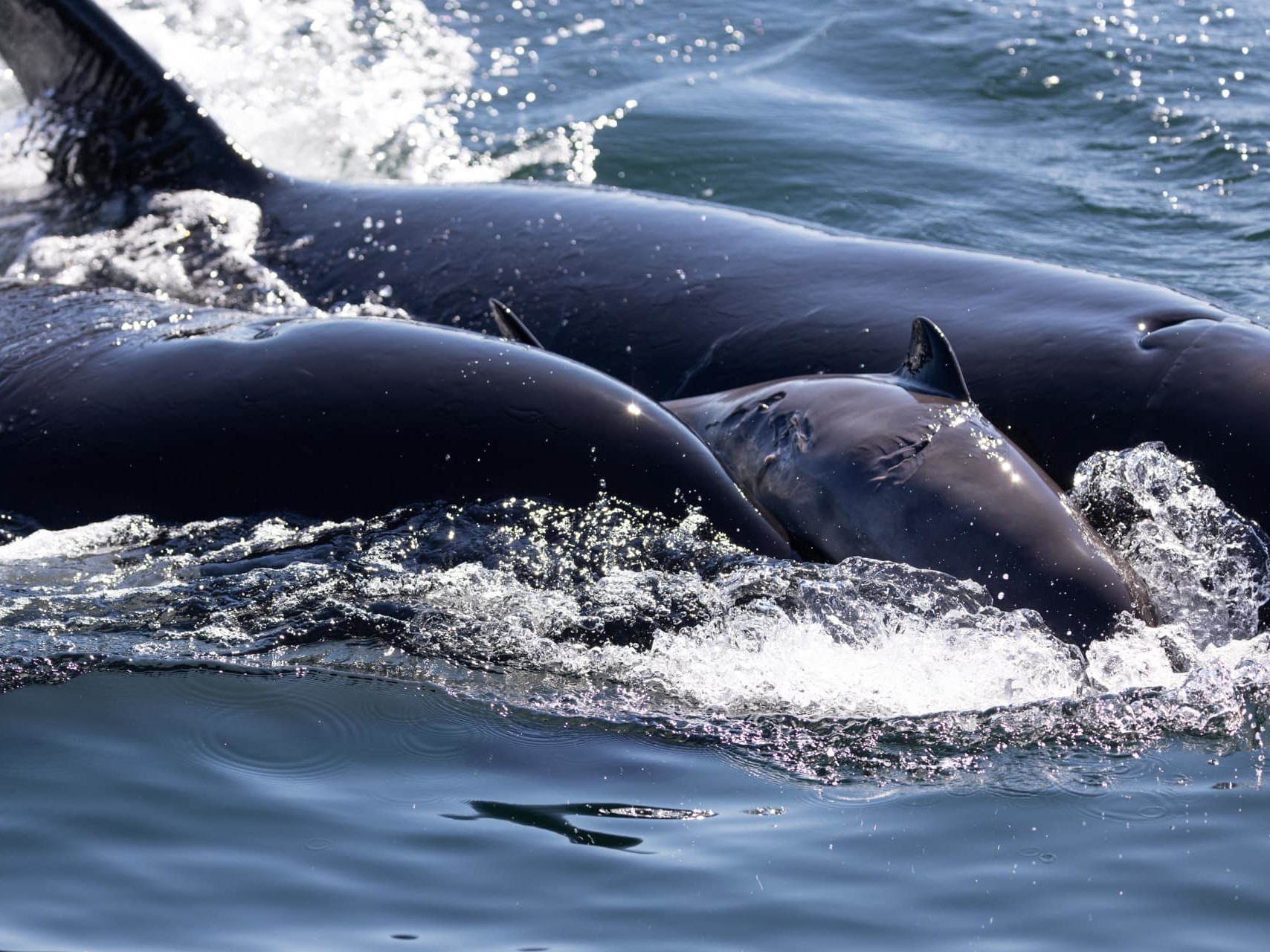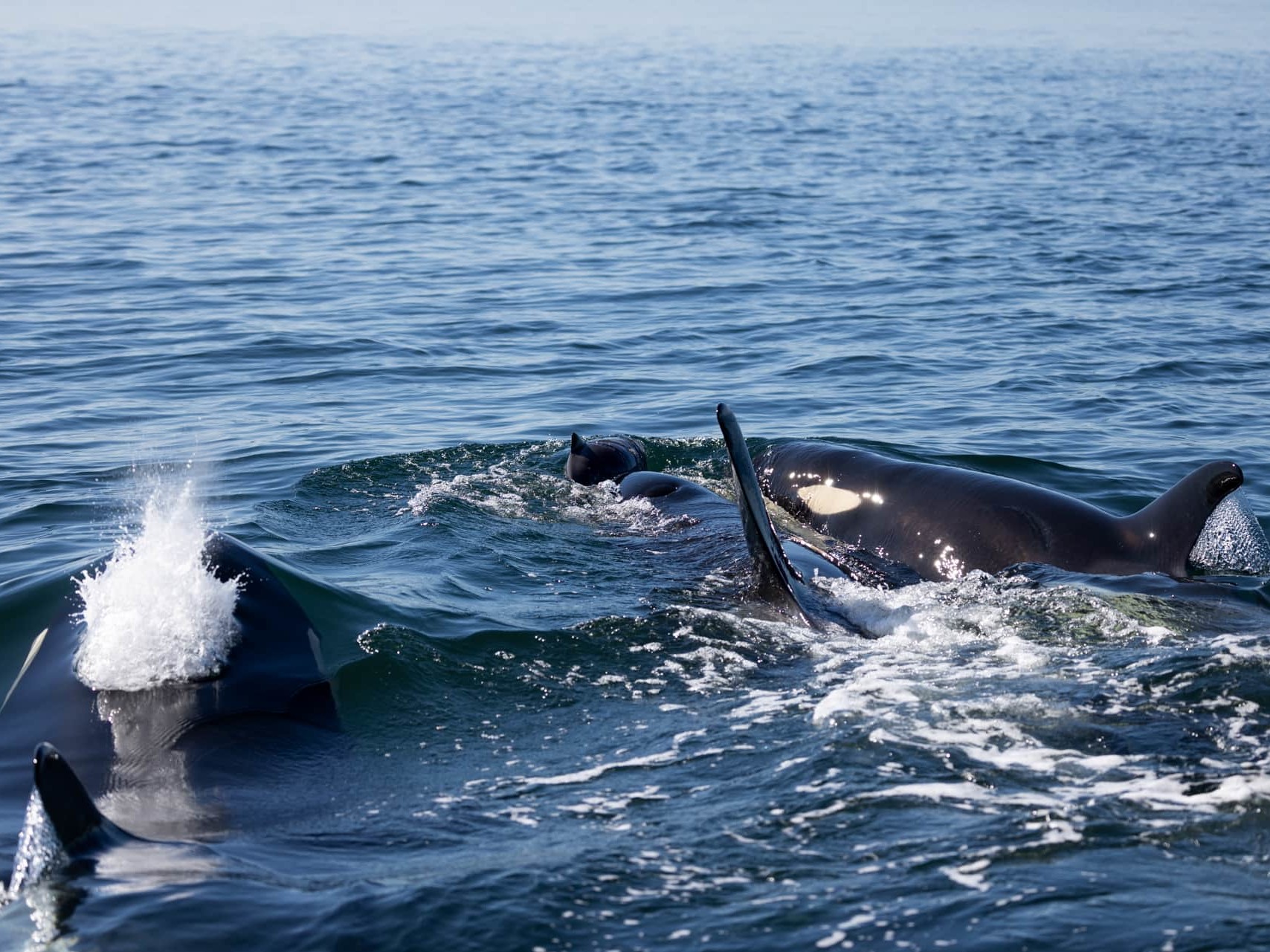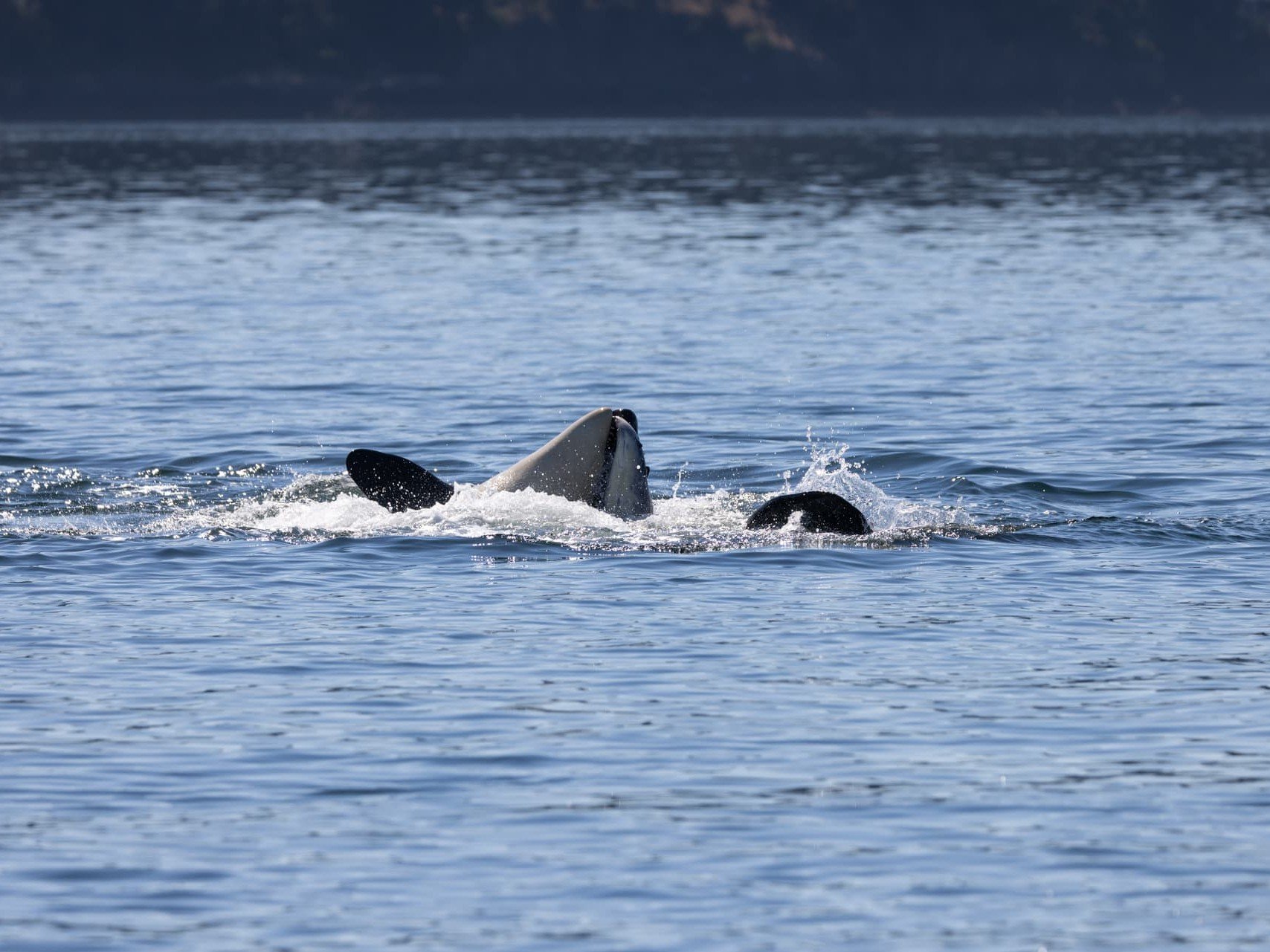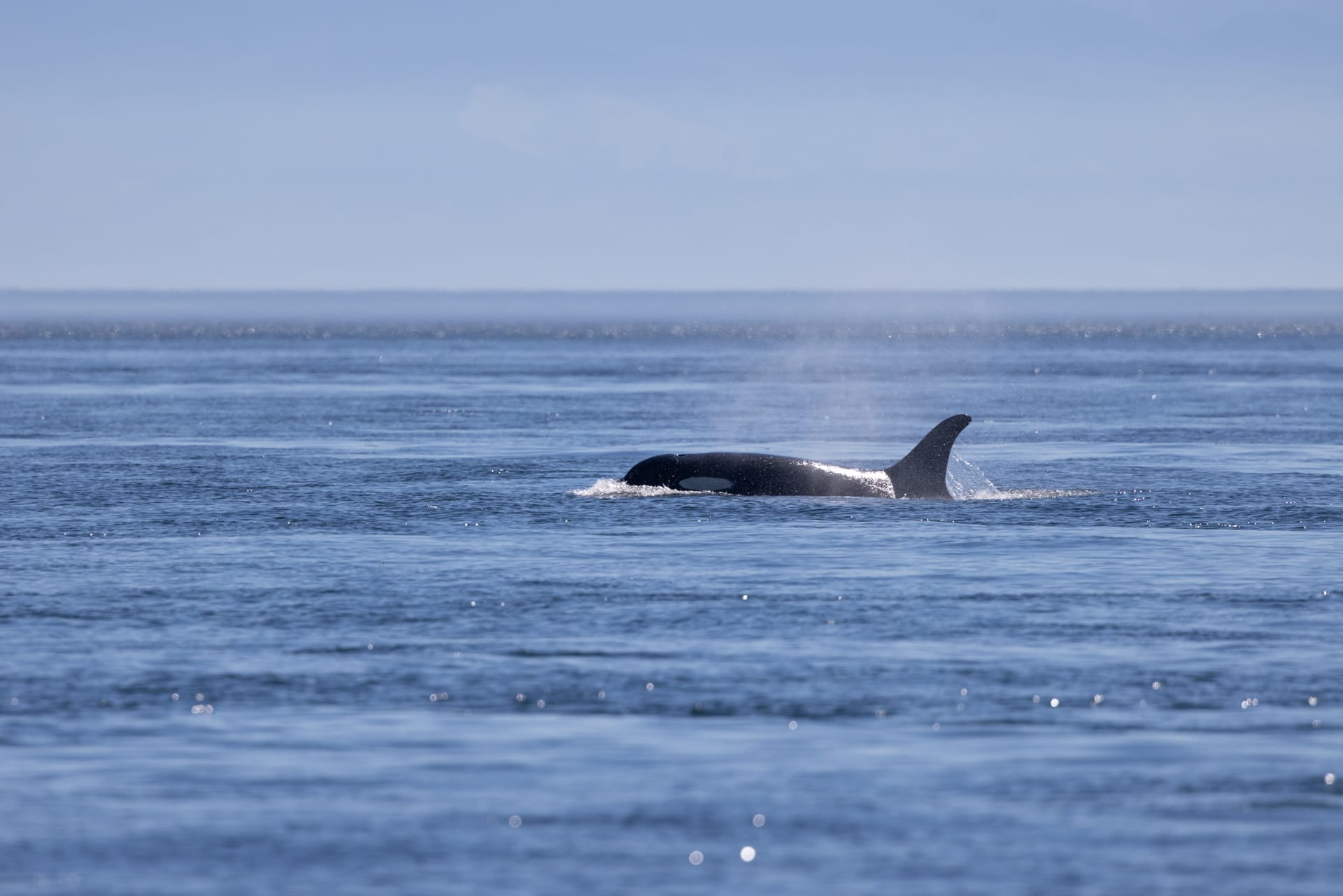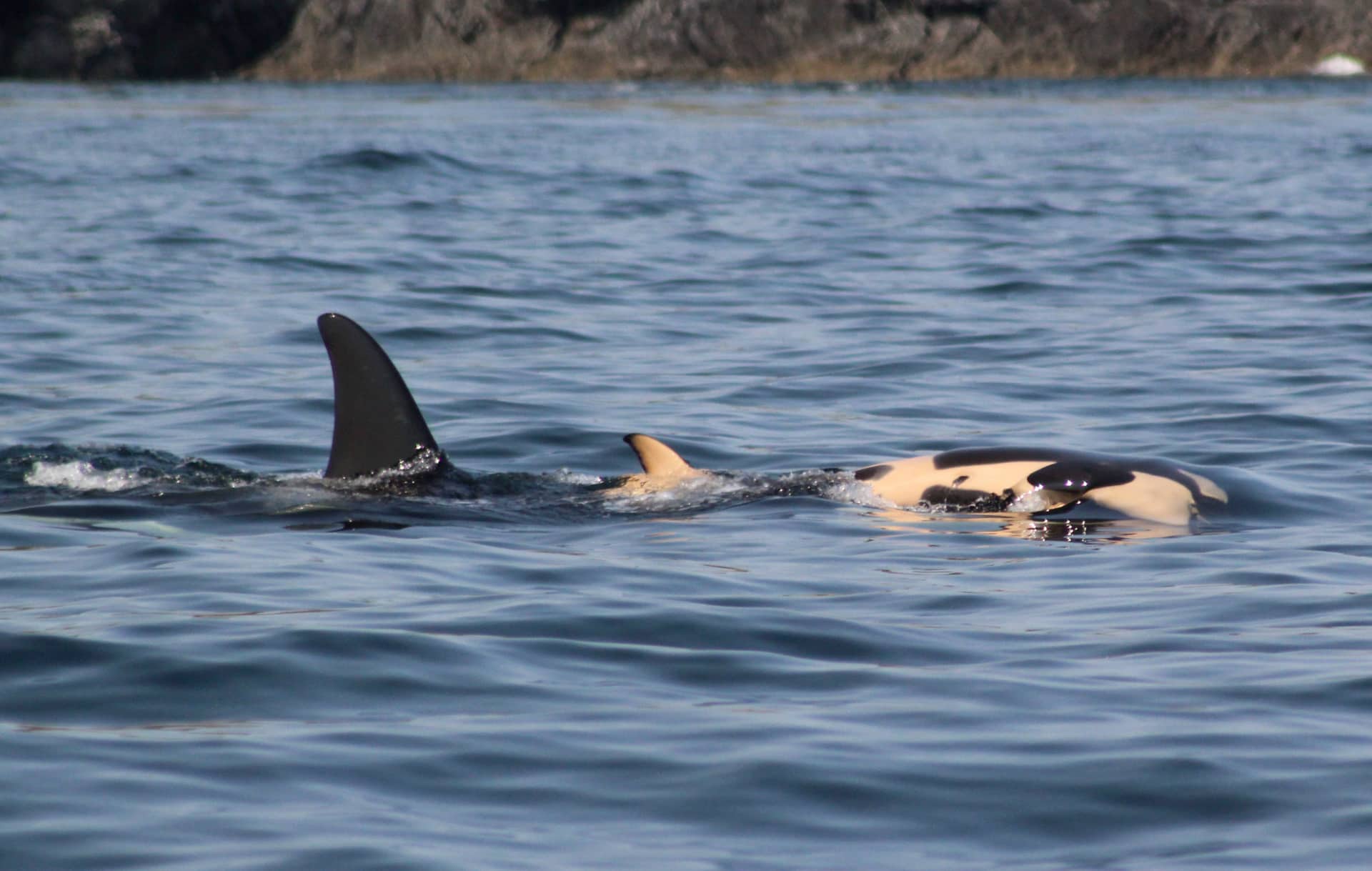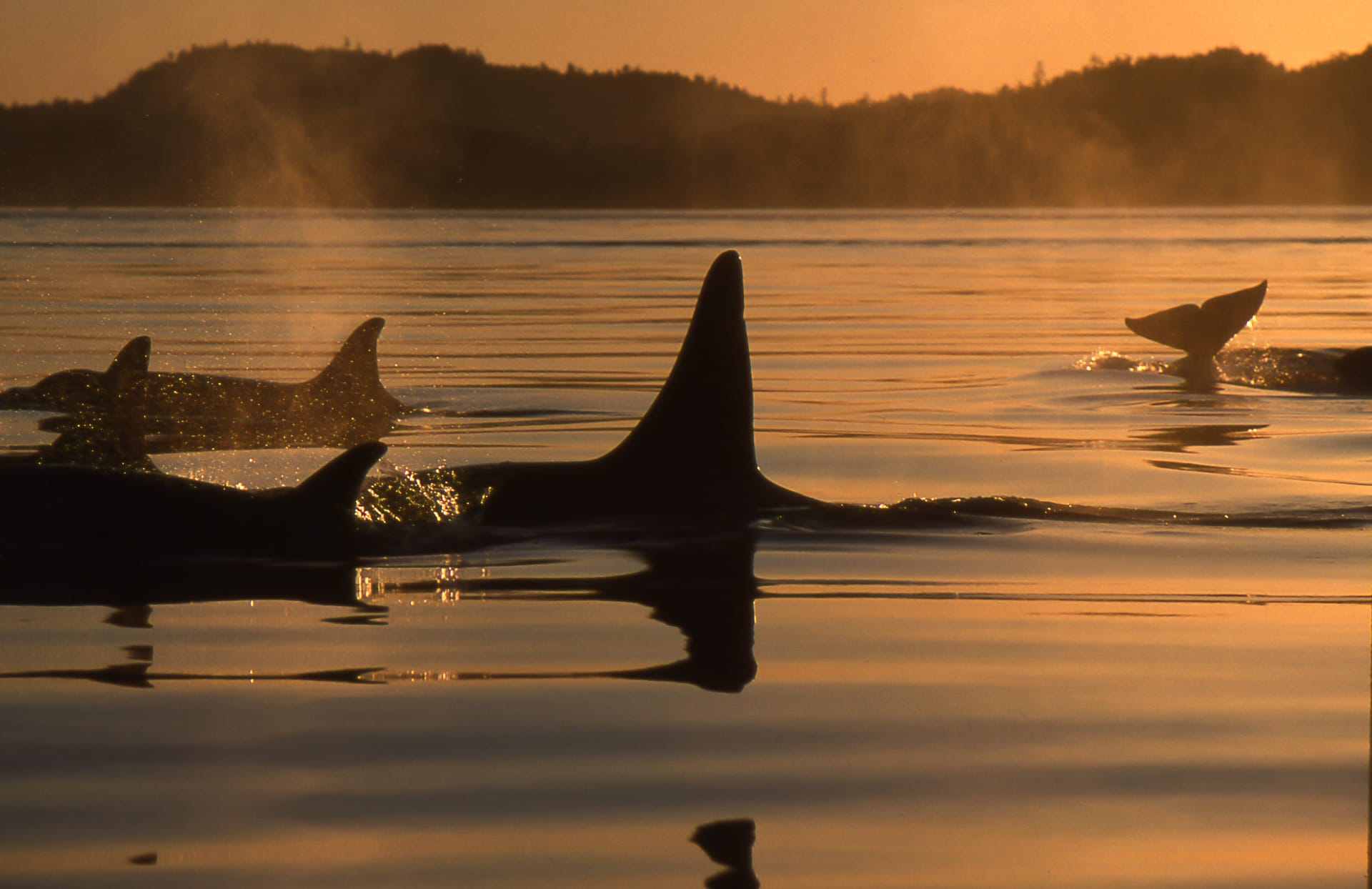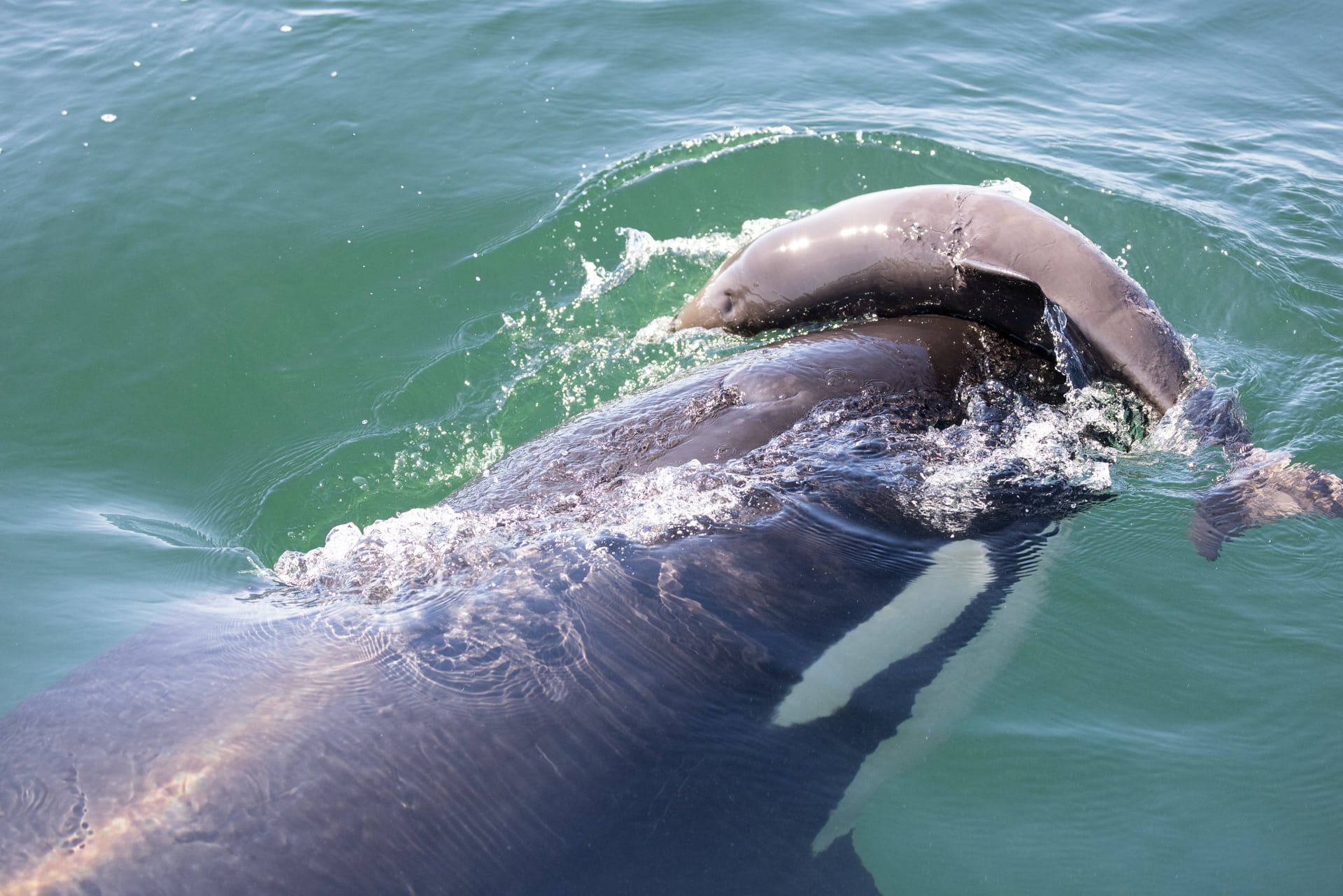
Why do some dolphin species, including the Southern Resident killer whales, kill harbor porpoise when they are neither prey, nor competition for prey?
That’s a question Wild Orca’s Dr. Deborah Giles has been seeking to answer for nearly two decades, and this week she had a front row seat to one such event.
On July 25, 2022, Wild Orca’s research team was collecting fecal samples for analysis for our Southern Resident Killer Whale Health Monitoring Program. “With the aid of scent detection dog Eba, our research is non-invasive,” said Giles, “this means we’re at a distance from the whales to avoid disturbing them, especially when feeding.”
What happened next was both thrilling and shocking. In a sudden explosion of water, several members of J pod approached the research boat at high speed. As the whales came just feet away, J41 Eclipse and her 7 year-old son J51 Nova could be seen apparently shouldering a young harbor porpoise between them, as another youngster J53 Kiki joined them.
As the group surfaced next to the boat, Giles could see that the porpoise was still alive, but was being propelled now by these three killer whales. They continued at speed away from the boat, yet close enough for Giles and the team to safely witness and document how the event played out.
For more than 35 minutes, a group of five whales interacted with the young porpoise until the animal died around 10:20am. These were identified as J41 and her calves J51 and J58 Crescent, with unrelated females J36 Alki and J53.
Once the whales had apparently abandoned the deceased porpoise, Giles gained permission from the San Juan County Stranding Coordinator to collect the young animal. However, while working with nets to secure the body, J53 appeared alongside the boat, requiring the team to immediately release the porpoise and pull their nets back in. J53 quickly approached, gripped the porpoise with her teeth and swam away.
J53 and J36 continued to interact with the deceased porpoise, while J41 and her two youngsters left together. Finally at 10:43, J36 took the porpoise from J53, securing it by the pectoral fin, the pair set off at high speed south past Lime Kiln State Park where J36 was photographed from shore still carrying the porpoise. By the time they reached Smallpox Bay, a short distance south, the porpoise was no longer in the whales’ possession. Unfortunately, the Wild Orca team was unable to locate and retrieve the body.
Nearly 3,000 photos plus video footage aided in identifying the individuals involved at each key stage, and helped create a play-by-play of activity in this fast moving, seldom witnessed event. In fact, when reviewing these images, the team learned that the event had actually started earlier and had been inadvertently captured while taking ID photos of whales present from 09:44. At that time, four additional animals were in the mix, including two adult females, J19 Shachi, mother of J41, with J40 Suttles, and her brother J45 Se-Yi’Chn, a teenage male. Also present was J46 Star, older sister to J53. By 10:00 am these four had left the scene, including J19. This earlier evidence suggested that mother and daughter J19 and J41 were the likely instigators, as they were first documented with the porpoise between them.
“Porpicide” also known as “Phocoenacide” has been documented in fish-eating killer whales since the 1970s, and occurs in all three West Coast populations; also seen worldwide in bottlenose dolphins, and although the size difference is much smaller, the outcome is the same.
Giles continued, “As scientists, we’ve always wanted to understand what drives this behavior. Teaching hunting skills seems unlikely; this is not a species they need to equip their youngsters to handle, given that they don’t eat marine mammals. When it’s been possible to retrieve these porpoise, they’re often unmarked, suggesting they might die of anxiety or exhaustion.”
Continued below...
Giles is now able to add a unique eyewitness perspective to the record. “I’m still processing this event,” she explained. “This encounter was by far the longest and most interactive episode of phocoenacide I have personally observed; an amazing contribution to this behavior that killer whale scientists have been studying and collecting data on for years. To be able to capture footage and stills to add to our collective body of knowledge is a dream, and that our team was able to do so in an unexpected, high stress moment, it’s astonishing.”



